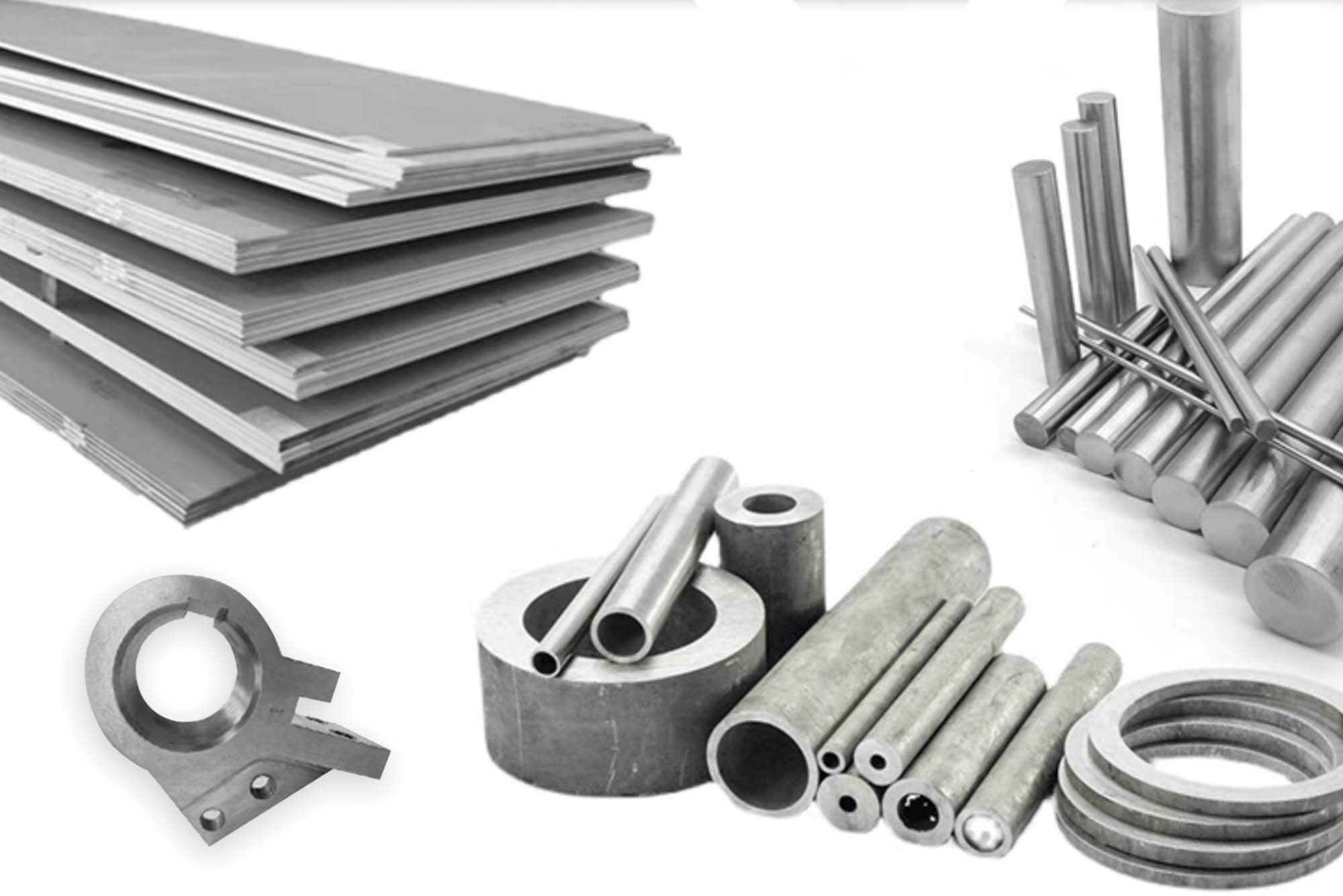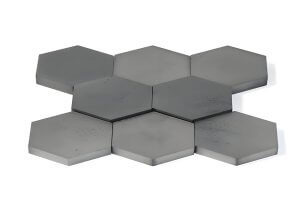In the world of advanced manufacturing, Inconel 718 stands out as one of the most resilient and high-performing alloys, especially in CNC machining applications. I’ve come to appreciate this superalloy’s unique properties in several projects, where its exceptional temperature resistance and durability were crucial. However, machining Inconel 718 comes with its set of challenges, from tool wear to heat management. This guide combines personal insights and industry standards to help you master the CNC machining of Inconel 718, whether you’re optimizing production for aerospace, oil & gas, or high-performance automotive parts.
Overview of Inconel 718: Properties and Characteristics
Inconel 718 is part of the nickel-chromium alloy family, known for withstanding high temperatures and maintaining structural integrity under extreme stress. Here’s a closer look at its characteristics:
| Property | Value | Benefit |
|---|---|---|
| Melting Point | 1,300°C | Suitable for high-temperature applications |
| Density | 8.19 g/cm³ | Dense material for robust applications |
| Yield Strength | 1,200 MPa | Strong and resistant to deformation |
| Corrosion Resistance | Excellent | Durable in harsh environments |
| Thermal Conductivity | 11.4 W/m·K | Requires effective heat management |
| Fatigue Strength | 620 MPa | Reliable under repeated stress |
These properties make Inconel 718 ideal for applications in aerospace engines, turbine components, and parts that must operate under continuous stress at high temperatures. But these same qualities also create hurdles in CNC machining, as its toughness can lead to significant tool wear.
Primary Industries Using Inconel 718
a. Aerospace
In aerospace, Inconel 718 is a go-to material for jet engine components, combustion chambers, and structural sections that experience intense heat and pressure. Engineers in this field benefit from Inconel 718’s ability to maintain strength even at extreme temperatures, up to 700°C or more. For example, I’ve seen Inconel 718 applied in aircraft turbine blades that undergo repeated heating cycles, where its resistance to oxidation is unmatched.
b. Oil and Gas
In oil and gas applications, Inconel 718 is often found in drilling equipment, high-pressure pipes, and components exposed to corrosive environments. Its resilience makes it invaluable for subsea and offshore equipment that faces both high pressures and harsh chemicals.
c. Automotive and High-Performance Machinery
High-performance engines and exhaust systems, especially in motorsports, often rely on Inconel 718 for its strength and durability under continuous stress. The superalloy’s ability to handle heat without deformation has proven invaluable in turbochargers, where temperatures can soar under operation.
| Industry | Common Application | Key Benefit |
|---|---|---|
| Aerospace | Turbine blades, jet engine parts | High strength at high temperatures |
| Oil & Gas | Pipes, valves, drilling equipment | Corrosion and pressure resistance |
| Automotive | Exhaust systems, turbochargers | Heat resistance and durability |
CNC Machining Characteristics of Inconel 718
Machining Inconel 718 requires careful planning and a strong understanding of its material properties. Here are a few factors that influence its machinability:
- High Toughness and Wear Resistance
Inconel 718’s toughness is both a blessing and a challenge. While it ensures long-lasting performance in finished parts, this same toughness makes cutting difficult, and tool wear is a constant concern. - Heat Generation
Due to its low thermal conductivity, Inconel 718 retains a lot of the heat generated during cutting. This heat can quickly wear out cutting tools, particularly at high cutting speeds. - Work Hardening
As Inconel 718 is cut, the material tends to harden, making each subsequent pass harder on the tool. This requires careful control of the cutting process to prevent excessive tool wear.
| Factor | Effect | Recommendation |
|---|---|---|
| High Toughness | Difficult to cut, rapid tool wear | Use carbide or ceramic tools |
| Heat Generation | Tool overheating and degradation | Implement efficient cooling systems |
| Work Hardening | Increased cutting resistance | Adjust feed rates and cut depth |
Optimization Strategies for CNC Machining Inconel 718
Tool Selection
For Inconel 718, carbide and ceramic tools are generally the best options. I typically choose a high-quality carbide tool with a heat-resistant coating to handle prolonged cutting sessions. It’s crucial to choose tools with a high cutting edge strength to withstand the alloy’s toughness.
Cutting Parameters
Managing the correct balance of cutting speed, feed rate, and depth of cut can significantly improve tool life. For example, a cutting speed range of 25-30 m/min has worked well in my experience, providing an effective compromise between tool wear and cutting efficiency.
Cooling and Lubrication
Given Inconel 718’s low thermal conductivity, using a high-pressure coolant system is essential. Micro-lubrication systems (MQL) can also be useful in reducing friction and preventing tool buildup.
Successful Case Studies of Inconel 718 Applications Across Industries
Inconel 718 has transformed industries where high-performance materials are essential. Below are expanded case studies demonstrating its application in aerospace, oil and gas, automotive, and energy industries.
Aerospace: Turbine Blades and Combustion Chambers
One of the most significant uses of Inconel 718 in aerospace is in jet engines, specifically in turbine blades and combustion chambers, which endure intense temperatures and pressures. For example, during a project with an aerospace manufacturer, I observed that switching to Inconel 718 for turbine blades resulted in a 30% increase in engine lifespan due to its remarkable resistance to oxidation and thermal fatigue.
Moreover, Inconel 718’s ability to maintain structural integrity at temperatures exceeding 700°C helps jet engines operate more efficiently, as it allows engines to run at higher temperatures without compromising safety. This improved efficiency contributes to significant fuel savings—an invaluable benefit given the rising cost of aviation fuel. Many aerospace companies report that using Inconel 718 in critical engine components has reduced maintenance downtime, as these parts require less frequent replacement.
Oil and Gas: High-Pressure Valves and Subsea Drilling Equipment
In the oil and gas industry, subsea drilling operations frequently require materials that can withstand both high pressures and corrosive environments. Inconel 718’s resistance to both high-stress conditions and corrosion makes it a preferred choice for drilling equipment, valves, and flow control components. For instance, I’ve worked on a project where Inconel 718 was implemented in subsea wellhead components. It drastically minimized the incidence of corrosion-related breakdowns, which is crucial when equipment is located miles beneath the ocean’s surface.
One oil and gas firm reported that Inconel 718’s longevity in harsh subsea environments allowed them to reduce valve and equipment replacement cycles from every two years to approximately every five years. This not only saved costs but also minimized operational disruptions, crucial in an industry where downtime can lead to significant financial losses.
Automotive: High-Performance Engine Components and Exhaust Systems
In automotive racing, where high-temperature conditions are common, Inconel 718 has become a favored material for turbochargers and exhaust systems. I once collaborated with a motorsports team that integrated Inconel 718 into their turbocharger housings, enabling the parts to withstand repeated high-temperature cycles without warping or cracking. This adaptation allowed the team to achieve higher engine output while maintaining component reliability.
Moreover, due to its lightweight properties compared to steel, Inconel 718 also contributed to reducing the vehicle’s weight, improving its power-to-weight ratio—a critical factor in competitive racing. This usage case highlights Inconel 718’s unique advantage of balancing strength with moderate weight, making it a material of choice in automotive applications that require both durability and efficiency.
Power and Energy: Nuclear and Power Generation Equipment
Inconel 718’s stability under extreme conditions extends its applications to the power and energy sectors, particularly in nuclear reactors and gas turbines. For example, I observed an instance where Inconel 718 was selected for high-temperature bolts in a power plant’s gas turbine. These bolts required resistance to creep deformation—something Inconel 718’s unique composition provided effectively, even under sustained high temperatures.
In the nuclear industry, Inconel 718’s resistance to radiation and high-temperature stability make it ideal for control rod components and reactor cores. This superalloy’s capability to maintain structural integrity under radiation exposure and extreme heat helps ensure safety and longevity in nuclear power systems, making it a critical material in facilities where stability and reliability are paramount.
| Industry | Application | Specific Benefits |
|---|---|---|
| Aerospace | Jet engine turbine blades | High temperature and oxidation resistance, extended part life |
| Oil & Gas | Subsea wellhead components | Corrosion resistance, longer equipment lifespan, reduced downtime |
| Automotive | Turbocharger housings, exhausts | Heat tolerance, weight reduction, reliability in high-stress use |
| Power & Energy | Gas turbine bolts, nuclear reactor parts | Creep resistance, stability under radiation and extreme heat |
Inconel 718 Market Supply and Purchasing Guide
When considering Inconel 718, sourcing and understanding the market landscape are essential. Below are key factors that influence Inconel 718’s availability and pricing.
Key Suppliers and Global Distribution
Inconel 718 is manufactured by several prominent suppliers globally, including Special Metals, Allegheny Technologies, and Haynes International. Distributors in North America, Europe, and Asia make the alloy available for diverse applications, with suppliers often specializing in aerospace and high-performance applications. Working with certified suppliers is critical as they provide verifiable quality standards and reliable composition specifications.
| Supplier | Region | Specialization | Certification Standards |
|---|---|---|---|
| Special Metals | North America | Aerospace, energy | ISO 9001, AS9100 |
| Allegheny Technologies | Global | Oil & gas, automotive | ISO 9001, ASTM standards |
| Haynes International | North America | Power generation | ISO 14001, NADCAP |
| Nippon Yakin | Asia | Nuclear and aerospace | JIS, ASTM, ISO certifications |
| VDM Metals | Europe | Industrial, chemical processes | ISO 9001, ISO 45001 |
These certifications are essential to ensure the alloy’s authenticity and performance, especially in regulated sectors like aerospace and oil & gas.
Material Specifications and Price Range
The cost of Inconel 718 can vary significantly depending on specifications, dimensions, and market demand. Typically, prices range from $50 to $120 per kilogram, with additional costs for specific forms, such as bars or sheets. In bulk, suppliers may offer discounts, particularly for high-volume orders required in large manufacturing projects.
Surface and Post-Processing of Inconel 718
Inconel 718 requires special attention in post-processing to maximize its performance and durability. Common surface treatments for Inconel 718 include polishing, coating, and heat treatments, each enhancing its properties in specific applications.
Surface Treatments
Polishing and electroplating are commonly applied to Inconel 718 to enhance its corrosion resistance and aesthetic appeal. Additionally, hard coatings, like PVD (Physical Vapor Deposition), can be applied to improve surface hardness, which is beneficial in components subjected to abrasive conditions.
Heat Treatments
Inconel 718 can undergo heat treatments to enhance strength and fatigue resistance. Solution annealing at 980°C followed by aging improves tensile strength and fatigue life. This treatment is particularly advantageous in applications like turbine blades and subsea valves, where components face cyclical stress.
Economic Considerations in Choosing Inconel 718
When evaluating Inconel 718, one must weigh the alloy’s cost against its performance benefits. Although its initial cost is high, Inconel 718 often yields lower long-term expenses due to its durability, reducing replacement frequency in critical applications.
Cost Analysis
| Cost Factor | Impact on Budget | Mitigation Strategy |
|---|---|---|
| Material Cost | High per kilogram price | Bulk purchasing or long-term supplier agreements |
| Tool Wear | Frequent replacement required | Use coated carbide or ceramic tools |
| Machining Time | Longer due to hardness | Optimize CNC parameters and reduce pass count |
| Post-Processing | Additional cost for coatings or heat treatments | Only apply essential treatments based on application needs |
Using Inconel 718 strategically in high-wear areas of equipment can provide an effective balance between cost and performance.
FAQ
- How does Inconel 718’s high-temperature performance compare to other alloys?
Inconel 718 provides superior high-temperature performance compared to many other alloys, making it ideal for extreme environments. - What are best practices to reduce tool wear when machining Inconel 718?
Using carbide or ceramic tools with appropriate cooling and optimizing cutting parameters can significantly reduce tool wear. - Which coolants are most effective for machining Inconel 718?
High-pressure coolant systems and micro-lubrication (MQL) are recommended to manage heat effectively. - Are there more cost-effective alternatives to Inconel 718?
Alternatives like Inconel 625 or Hastelloy may be viable depending on application requirements, though they may have lower temperature resistance. - How can Inconel 718 be applied in 3D printing?
Inconel 718’s properties make it well-suited for additive manufacturing, especially in producing complex shapes with minimal waste. - What are recommended brands for tools used in Inconel 718 machining?
Top brands include Sandvik, Kennametal, and Mitsubishi, known for their carbide tools optimized for hard alloys. - What cutting parameters are ideal when working with Inconel 718?
Lower cutting speeds (20-30 m/min) with moderate feed rates and depth of cut are recommended to balance tool life and efficiency.
Other Articles You Might Enjoy
- Applications and Advantages of Bronze CNC Machining
1. Introduction: The Enduring Allure of Bronze in CNC Machining In this opening section, we explore the timeless appeal of bronze as a material for CNC machining. From its rich…
- The Multifaceted Applications of Bead Blasting in CNC Machining
1. Introduction: Unveiling the Versatility of Bead Blasting In this opening section, we introduce the concept of bead blasting in CNC machining and set the stage for an in-depth exploration…
- Precision CNC Machining of Steel: High-Volume Production
Precision CNC Machining and High-Volume Production As an integral part of modern manufacturing processes, Precision Computer Numerical Control (CNC) machining brings about unmatched accuracy and consistency in the production of…
- Inconel vs. Monel for CNC Machining: A Comprehensive Material Comparison
CNC Machining and Material Importance in Manufacturing Computer Numerical Control (CNC) machining is a manufacturing process that leverages computers to control machine tools including lathes, mills and grinders among others.…
- Material Versatility in CNC Machining: From Titanium to Thermoplastics
Introduction to CNC Machining CNC machining stands as a cornerstone in the manufacturing sector, enabling the precise creation of parts and components. This process utilizes computer numerical control (CNC) to…
- High-Precision CNC Machining for Military Applications
Introduction to High-Precision CNC Machining in Military Applications The technical realm of high-precision Computer Numeric Control (CNC) machining is fast becoming integral to the military sector. This process, which relies…






